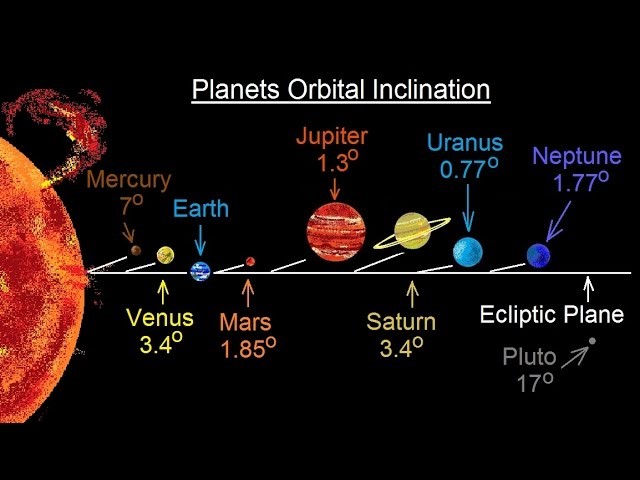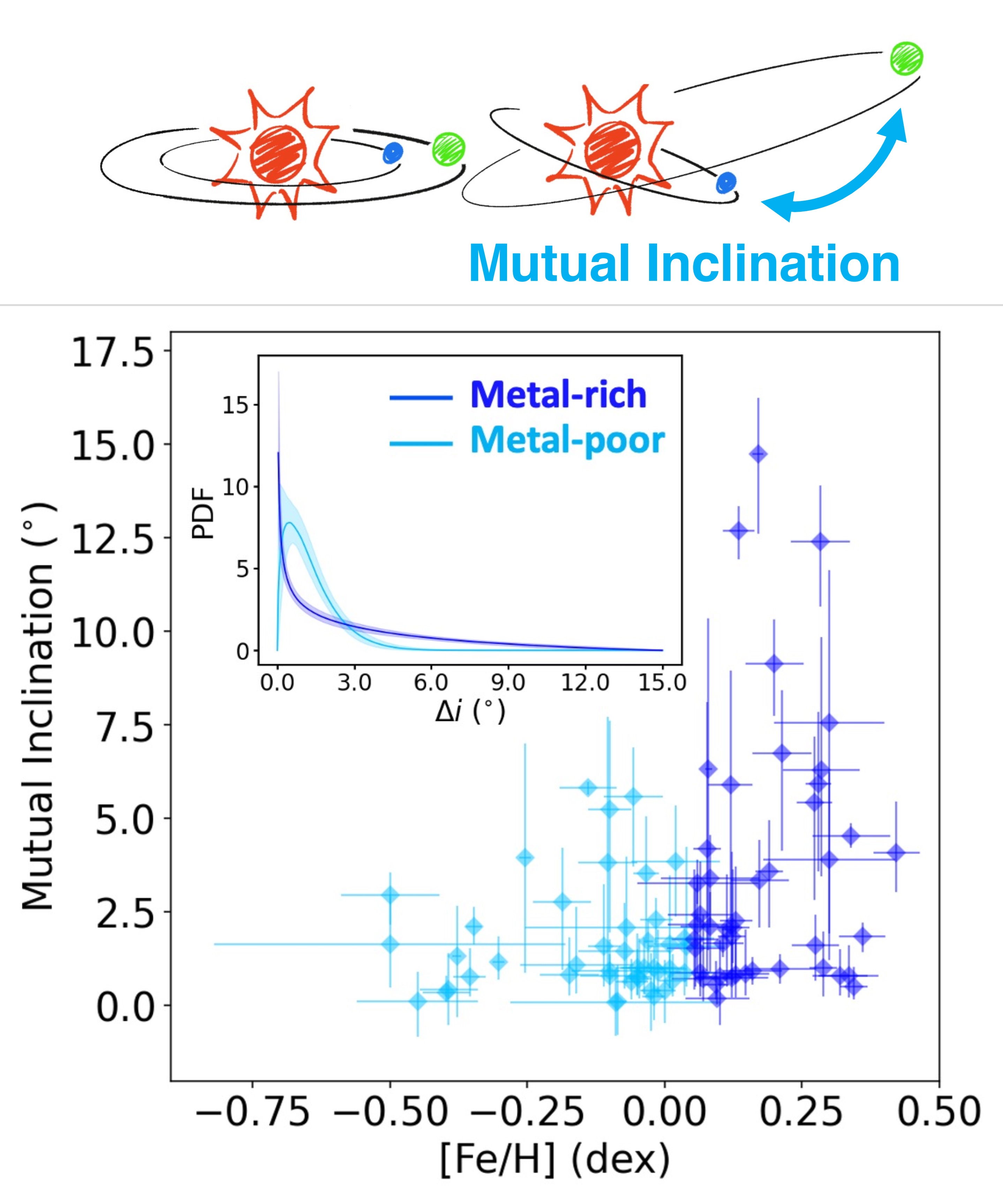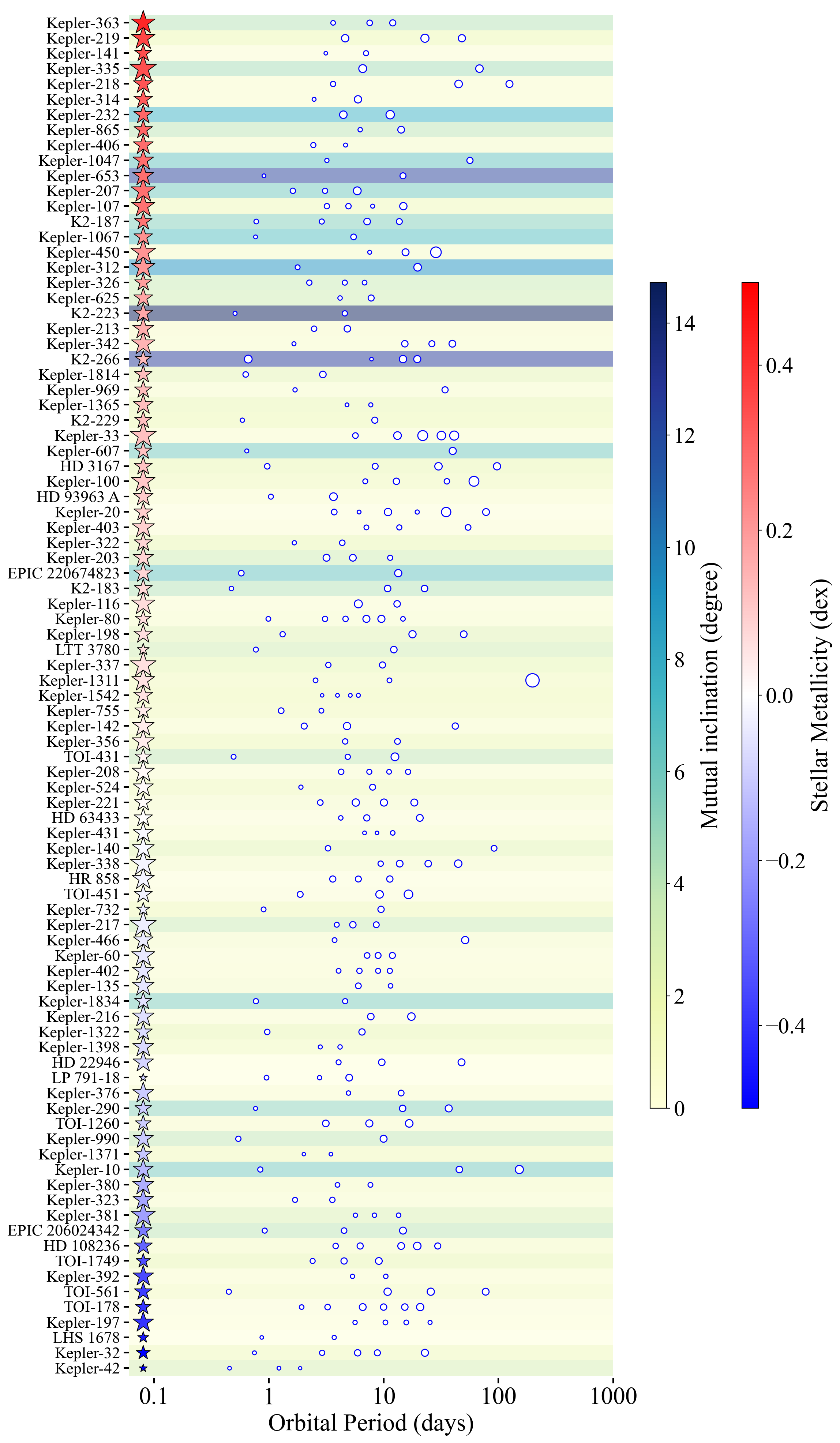Our Solar System exhibits a flat architecture, with nearly all planets orbiting within the same plane. Among them, Mercury is the most inclined planet with a mutual inclination of 7 degrees relative to Earth’s orbital plane (Figure 1). Mutual inclination, which refers to the angle between the orbital planes of two planets, serves as a key indicator of the dynamical architecture of planetary systems. Unlike the solar system, exoplanetary systems can be very diverse in mutual inclinations, ranging from near planar to maximum 180 degrees. Recently, an international team led by Tsinghua astronomers has identified a correlation between mutual inclination and the host star’s metallicity ([Fe/H]) for short-period small planets, revealing metal-rich stars tend to host more highly inclined planets and exhibit greater diversity in mutual inclinations compared to metal-poor hosts (Figure 2).

Mutual inclinations between Earth and other planets (and Pluto) in the solar system. Mercury is the most inclined planet. Credit: https://www.youtube.com/watch?v=gdfAteCln9M.
In this work, mutual inclinations are calculated between the inner most two planets in each system through subtraction of the best-fit inclinations derived from photometry analysis of their light curves during transits. In such a method, the two planets are assumed to transit in parallel across the host star, so the derived mutual inclination is the lower limit of its true value. The stellar metallicity data are mostly obtained from the stellar spectroscopic archive of The Large Sky Area Multi-Object Fiber Spectroscopic Telescope (LAMOST).

Mutual inclination as a function of the stellar metallicity. This work found that metal-rich stars tend to host more mutually inclined short-period small planets, and the mutual inclination distribution is more widely spread.
Higher mutual inclinations typically imply stronger interactions between the planets, which could be driven by mechanisms such as gravitational scattering or perturbations from distant giant planets, higher solid densities in protoplanetary disks around metal-rich stars, or secular chaos coupled with an excess of angular momentum deficits. Therefore, the stellar metallicity – mutual inclination correlation found in this work suggests that short-period planets in metal-rich systems exhibit a higher level of dynamical excitation compared to those around lower-metallicity stars. This finding could lead to new insights into the processes of planet formation and evolution, motivating simulations that track stellar properties and evolution of planet inclinations during planet formation. Additional follow-up observations on systems with higher mutual inclinations would be helpful to confirm any non-transiting outer giants in those systems and constrain the influence from giant planets.
This study has been published in The Astrophysical Journal Letters. Tsinghua DoA graduate student Xinyan Hua is the first author, and the corresponding authors are Associate Professor Sharon Xuesong Wang and Xinyan Hua. Other co-authors are from Nanjing University, Indiana University, the University of Chinese Academy of Sciences, the Max Planck Institute for Extraterrestrial Physics and the University of Hawaii. The work of the Tsinghua team was supported by the National Natural Science Foundation of China and the Tsinghua Dushi Funding.
Paper link: https://ui.adsabs.harvard.edu/abs/2025ApJ...980L..46H/abstract

String plot for the 89 planetary systems in this work. Host stars are sorted and color-coded based on their [Fe/H] values, with more metal-rich stars plotted on top with warmer colours. The background grids are shaded according to mutual inclinations, where darker shades correspond to higher values.


